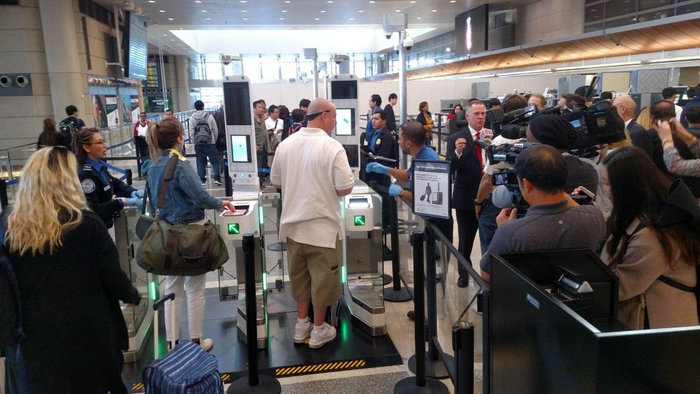The US Transportation Security Administration (TSA) is piloting two high-tech security checkpoint solutions in the Tom Bradley International Terminal (TBIT) at Los Angeles International Airport (LAX) in California.
The first pilot uses facial recognition technology to automate the identification and boarding pass verification process. Travelers who are ticketed on an international flight can opt to use the biometric recognition system to verify their identity.
After a traveler scans their boarding pass and passport, a camera activates and takes a photo of the passenger. The system verifies that the name on the boarding pass and passport match. It also confirms that the passport photo and the photo taken by the camera match. If any of these items do not match, the passenger is not granted access to the security checkpoint. During the pilot program, all travelers will still have their boarding and identity documents manually verified by a TSA officer.
The second pilot project features an enhanced Advanced Imaging Technology (AIT) unit with increased detection capabilities. The enhanced AIT, commonly referred to as a body scanner, does not require travelers to raise their hands over their head during the scan. In addition, it also provides corrective feedback to the TSA officer, alerting the officer if a passenger is improperly positioned in the unit.
Justin Erbacci, chief innovation and commercial strategy officer, LAWA, said, “Our selection as a TSA Innovation Task Force site gives LAWA the opportunity to see how these new products could help improve the guest experience at LAX. We are excited about the way these technologies can help smooth the journey for passengers using LAX while enhancing security at the same time.”
Steve Karoly, acting assistant administrator for requirements and capabilities and analysis, TSA, said, “TSA’s strong partnership with LAWA has allowed the agency to pilot emerging technologies and evaluate their performance real-time in a busy security checkpoint environment. We look forward to continuing this relationship to identify ways to increase the security effectiveness and efficiency of the passenger experience.”


